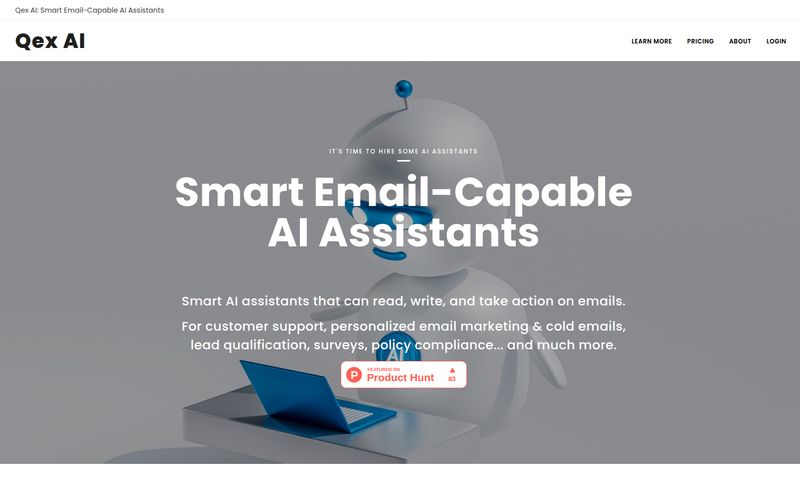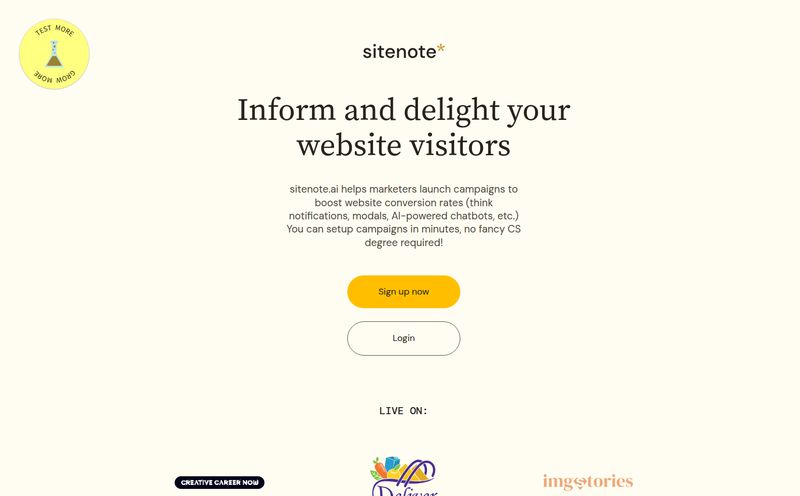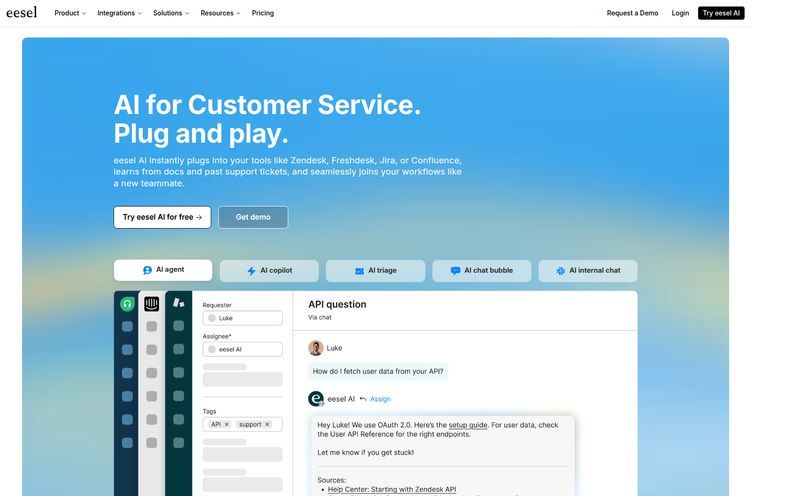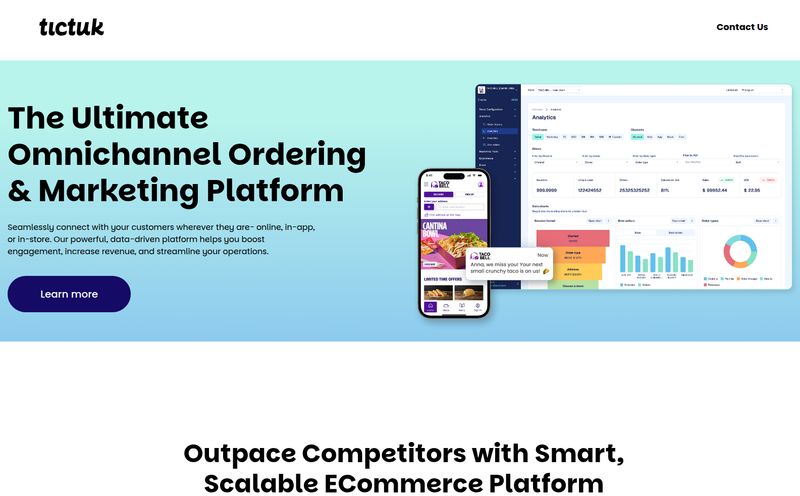You, me, and the ever-present headache of customer data. It’s everywhere. It’s in your CRM, your email marketing tool, your support desk software, your e-commerce backend... It’s like you’ve hosted a massive party, and every guest is in a different room, refusing to talk to each other. The result? A disjointed, often frustrating experience for the very people you’re trying to impress: your customers.
I’ve been in the SEO and traffic game for years, and if there’s one truth that's become crystal clear, it’s this: all the traffic in the world means nothing if the customer experience on the other side is a mess. We’ve all been there—getting a promotional email for a product we just bought, or having to explain our issue to three different support agents. It’s infuriating.
This is where the new wave of tech, branded as AI-Powered Unified Customer Experience Platforms, waltzes in, promising to be the master party planner who gets everyone mingling. But is it all just marketing fluff, or is there something genuinely powerful here? I’ve been looking into one such platform, and honestly, the concept is pretty compelling.
So, What Exactly is a Unified Customer Experience?
Forget the jargon for a second. Imagine your business has one single, collective memory of every customer. That’s the dream, right? A Unified Customer Experience (UCX) or Customer Experience Management (CXM) platform aims to be that memory. It’s designed to pull in data from all those separate rooms—your sales data, support tickets, website behavior, social media interactions—and put it all into one coherent timeline for each customer.
This isn't just another CRM. While a CRM is great for managing sales pipelines and contacts, a true unified platform goes broader. It’s less about managing the company's relationship with the customer and more about managing the customer's entire experience with the company. It's a subtle but massive shift in perspective, moving from a sales-centric view to a genuinely customer-centric one. It’s the difference between a rolodex and a detailed, living biography.
The AI Secret Sauce: Features That Actually Matter
Okay, so having all the data in one place is cool. But data is just data until you do something with it. This is where the “AI-powered” part comes in and, I’ve got to admit, this is where it gets exciting.
The Unified Customer Data Platform Foundation
First things first, you have to break down those data silos. This is the bedrock of the whole system. The platform integrates with all your different tools to create a single source of truth for each customer. No more guessing games. You can see that Jane Smith visited your pricing page three times this week, downloaded an ebook last month, and had a support ticket resolved two days ago. All on one screen. That context is gold.
AI-Driven and Automated Customer Engagement
With that unified view, the AI can get to work. It can spot patterns and opportunities that a human might miss. For example, it can identify customers who are showing signs of churn and automatically trigger a retention campaign. Or, it can see a customer is highly engaged and flag them for a personal outreach from your success team. This isn't just about scheduling emails; its about triggering the right action at the right time, automatically.

Visit AI-Powered Unified Customer Experience Platform
Hyper-Personalization at Scale
Personalization is a word we throw around a lot. But “Hi [First Name]” doesn’t cut it anymore. True personalization is about relevance. Because the AI has access to the full customer story, it can help you craft experiences that feel uniquely individual. Imagine your website dynamically changing to show content relevant to a visitor’s industry, or a support chatbot that already knows the customer's purchase history and doesn't ask them to repeat it. That’s the kind of seamless experience that builds loyalty.
The Big Question: Is It Worth The Hype?
This all sounds great on a sales page. But as a professional who’s seen countless “game-changing” tools come and go, I’m always skeptical. So let’s get real about the pros and the potential pitfalls.
The Upside: More Than Just Happy Customers
When this works, it really works. The obvious benefit is improved customer satisfaction. People feel understood and valued, which directly impacts retention and word-of-mouth marketing. But the internal benefits are just as significant. Your teams become way more efficient. Support agents solve problems faster. Marketing can create campaigns that are ten times more effective. Sales can have smarter conversations. You’re no longer wasting resources on disjointed efforts. And of course, you get incredible data-driven insights that can inform your entire business strategy, from product development to marketing spend.
The Reality Check: Potential Hurdles
Now, for the dose of reality. Implementing a platform like this isn't like installing a new browser plugin. It’s a project. The first hurdle is the data integration itself. Getting all your existing systems to talk to the new platform can be a technical beast. You need the right people and a solid plan.
Then there are the potential costs. We’re not just talking about a monthly subscription. There’s the cost of implementation, training your team, and potentially re-architecting some of your internal processes. It’s an investment, for sure.
Finally, there's the reliance on AI accuracy. The old saying “garbage in, garbage out” has never been more true. The AI’s recommendations are only as good as the data you feed it. You still need smart humans to oversee the strategy and ensure the AI's actions align with your brand's voice and goals. You can't just set it and forget it.
What About The Price Tag?
This is the part where I’d love to show you a neat little pricing table. But with enterprise-level software like this, it’s rarely that simple. I actually went looking for a pricing page for the platform I was reviewing and was met with a classic “404 Not Found” page. Which, in a way, is an answer in itself.
These platforms are almost always priced on a “contact us for a quote” basis. The cost will depend heavily on the size of your company, the number of customers you have, the specific features you need, and the complexity of your integrations. Don’t expect a simple three-tiered SaaS pricing model. You’ll need to have a conversation and a demo to get a real number.
Who Is This Really For?
So, should you rush out and get one? Well, it depends. If you’re a solopreneur or a small business just starting out, this is probably overkill. You can achieve a decent level of personal connection manually. But if you’re a mid-sized to large company, especially in e-commerce, SaaS, or any industry with a high volume of customer touchpoints, a platform like this could be transformative.
It’s for businesses that have reached a point where the complexity of their customer interactions is starting to cause friction—both internally and for the customer. If you’re feeling the pain of data silos, this is a solution built specifically for you.
Final Thoughts
The move toward a unified, AI-driven approach to customer experience isn’t just a trend; I think it’s the natural next step. The days of blasting the same message to everyone are over. Customers expect more. They expect you to know them.
While an AI-powered CXM platform isn't a magic wand you can wave to instantly solve all your problems, it is an incredibly powerful tool. It provides the framework and the intelligence to build a more efficient, insightful, and customer-focused business. It takes work, it takes investment, but the payoff—truly happy and loyal customers—is probably worth it.
Frequently Asked Questions (FAQs)
- What is a Unified Customer Experience (UCX) platform?
- It's a type of software that centralizes customer data from various sources (like sales, marketing, and support) into one single profile. This allows a business to have a complete view of each customer's journey and interact with them more personally and effectively.
- How is a UCX platform different from a CRM?
- While there's overlap, a CRM is typically focused on managing the sales and relationship pipeline from the company's perspective. A UCX platform is broader, focusing on managing the customer's entire experience across all touchpoints, from their first website visit to their most recent support ticket.
- Is an AI customer experience platform difficult to set up?
- It can be. The main challenge is integrating all your existing data sources. It's not a simple plug-and-play tool and often requires technical expertise and a clear implementation plan. It’s a significant project, not a weekend task.
- Can small businesses benefit from these platforms?
- While they are primarily designed for mid-to-large enterprises dealing with high volumes of data, some smaller, tech-savvy businesses might find value. However, the cost and complexity might be prohibitive for most small businesses, who can often manage customer experiences more manually.
- What kind of data can be unified?
- Pretty much any customer touchpoint you can track! This includes website browsing history, purchase data, email engagement, social media comments, support chat logs, survey responses, and data from your mobile app.
- How does AI improve customer satisfaction?
- AI improves satisfaction by enabling personalization at scale. It can predict customer needs, automate relevant communication, and provide support agents with the full context of a customer's history, leading to faster, more empathetic, and more effective resolutions.
Reference and Sources
- Gartner on Customer Experience Management (CXM) - For a high-level corporate perspective on the importance of CX.
- Forbes Tech Council on AI in Customer Experience - A good overview of how AI is being applied in this field.



